Types of Poems: A Complete Guide to Poetry Forms
Poetry is one of the most versatile and powerful forms of writing. It allows us to express our deepest emotions, thoughts, and ideas in creative ways. From the structured elegance of a sonnet to the freedom of free verse, there’s a type of poem for everyone.
Poetry isn’t just about rhymes or rhythm. It’s about voice. A poem can be a whisper, a roar, or a sigh. It tells stories, expresses emotions, and paints pictures with words.
And yet, many people still lump all poems into one basket.
But here’s the thing there are so many types of poems out there that it can be a little overwhelming to figure out which one to try first. If you’ve ever wanted to understand the different types of poems without drowning in jargon, you’re in the right place.
Let’s walk through the major poetry types with simple examples and helpful notes.
What Are the Main Types of Poems?
Poems are organized by structure, tone, and purpose. Some follow strict patterns. Others leave room for free expression. Here’s a breakdown of the most well-known poem types.
1. Sonnet: The Timeless Classic
The sonnet is perhaps the most well-known type of poem. With its structured 14 lines, it offers a compact yet powerful way to explore complex ideas, often revolving around themes like love, nature, and time.
There are two main types:
- Shakespearean sonnet (ABAB CDCD EFEF GG)
- Petrarchan sonnet (ABBA ABBA CDE CDE)
- Each line follows iambic pentameter, meaning five pairs of alternating unstressed and stressed syllables.
- Common themes: love, time, beauty, death
Example: Sonnet 18 by William Shakespeare
“Shall I compare thee to a summer’s day?
Thou art more lovely and more temperate:
Rough winds do shake the darling buds of May,
And summer’s lease hath all too short a date.”
This poem explores the fleeting nature of beauty and time, while also immortalizing the beloved through poetry itself.
2. Haiku: The Art of Simplicity
Originating in Japan, the haiku is a short, three-line poem that captures a moment in nature. The beauty of a haiku lies in its simplicity and ability to convey deep meaning through very few words.
It focuses on a moment in nature, a fleeting thought, or a subtle emotion.
The structure is strict: 5 syllables in the first line, 7 in the second, and 5 in the third.
Example: The Old Pond by Matsuo Bashō
“An old silent pond…
A frog jumps into the pond—
Splash! Silence again.”
This haiku portrays a fleeting moment in nature with a sense of peace and quiet, making it perfect for expressing transient emotions.
3. Ballad: The Storyteller’s Favorite
Ballads are narrative poems that tell a story, often revolving around dramatic events like love, loss, or death. Their simple, musical style makes them a beloved form of poetry, frequently passed down orally through generations. It usually has four-line stanzas and follows an ABAB or ABCB rhyme scheme.
- Length: Varies, but typically short.
- Rhyme Scheme: Often ABAB or ABCB.
- Themes: Adventure, tragedy, folklore.
Example: The Rime of the Ancient Mariner by Samuel Taylor Coleridge
“Water, water, everywhere,
And all the boards did shrink;
Water, water, everywhere,
Nor any drop to drink.”
Coleridge’s ballad narrates the tragic tale of a sailor cursed for killing an albatross. The rhythmic structure enhances the haunting feel of the story.
4. Limerick: Fun and Whimsical
Limericks are short, often humorous poems with a fixed five-line structure. Their distinct rhyme scheme of AABBA creates a sing-song quality, making them fun and memorable.
They bounce with a rhythm called anapestic meter (two short syllables, then a long one).
- Structure: Five lines.
- Rhyme Scheme: AABBA.
- Meter: Often anapestic meter (two short syllables followed by one long syllable).
- Tone: humorous, silly, light
Example: There Was an Old Man with a Nose by Edward Lear
“There was an Old Man with a nose,
Who said, ‘If you choose to suppose,
That my nose is too long,
That it won’t be too strong!’
That remarkable man with a nose.”
Lear’s limericks are known for their absurdity and playful use of language, making them a delightful read for all ages.
5. Ode: A Poem of Praise
An ode is a lyrical poem that expresses admiration and deep feelings of respect toward a person, event, or thing. Traditionally linked to Greek and Roman poets, the ode has evolved over time but remains a form of poetry that praises and reflects on beauty or achievement.
There are no strict rules, but odes are usually serious and reflective.
- Length: Often longer and more formal.
- Tone: Serious, reflective.
- Themes: Beauty, love, nature, accomplishments.
Example: Ode to a Nightingale by John Keats
“Thou wast not born for death, immortal Bird!
No hungry generations snap thy heels,
The voice I hear this passing night was heard
In ancient days by emperor and clown.”
Keats reflects on the fleeting nature of life and the immortal quality of art through the voice of the nightingale.
6. Free Verse: Poetry Without Boundaries
Free verse offers complete freedom in structure and style. Without the constraints of rhyme or meter, it allows poets to express themselves with total creative liberty. This form has become a staple in modern poetry, especially for those looking to capture raw, personal emotions.
It gives the poet total freedom to use line breaks, spacing, rhythm, and repetition however they choose.
- Structure: No fixed rhyme or meter.
- Themes: Love, nature, personal reflections.
Example: Song of Myself by Walt Whitman
“I celebrate myself, and sing myself,
And what I assume you shall assume,
For every atom belonging to me as good belongs to you.”
Whitman’s free verse captures his expansive sense of self and deep connection to the world around him.
7. Villanelle: The Power of Repetition
The villanelle is a 19-line poem with a distinctive structure and repetitive refrains. This form allows poets to emphasize a theme or emotion by repeating lines, creating a cyclical, almost hypnotic effect.
Two lines repeat alternately throughout the poem, creating a haunting or emotional rhythm.
- Structure: 19 lines, five tercets (three-line stanzas), and a final quatrain (four-line stanza).
- Rhyme Scheme: ABA for the tercets and ABAA for the quatrain.
- Themes: Longing, loss, obsession.
Example: Do not go gentle into that good night by Dylan Thomas
“Do not go gentle into that good night,
Old age should burn and rave at close of day;
Rage, rage against the dying of the light.”
Thomas’s villanelle is an emotional call to resist the inevitability of death, using repetition to drive home the urgency of life’s final moments.
8. Epic: The Heroic Journey
The epic is a long narrative poem, often dealing with the adventures of a hero or the founding of a nation. Epics are marked by their formal, elevated language and grand scale.
- Length: Very long, often thousands of lines.
- Themes: Heroism, divine intervention, war.
Example: The Odyssey by Homer
“Tell me, O Muse, of that ingenious hero who travelled far and wide
After he had sacked the famous town of Troy.”
The epic form is traditionally used to tell stories of legendary heroes and gods, celebrating the values of the time.
9. Sestina: A Poem of Pattern and Repetition
The sestina is one of the most challenging forms of poetry due to its strict structure. It consists of six stanzas of six lines each, with the final stanza reflecting on the poem’s themes.
- Structure: Six stanzas of six lines each.
- Repetition: A set pattern of repeated end words.
- Themes: Loss, time, memory.
Example: Sestina by Elizabeth Bishop
“September rain falls on the house.
In the failing light, the old grandmother
sits in the kitchen with the child
beside the Little Marvel Stove.”
Bishop’s sestina intertwines themes of loss and familial connection, using repetition to emphasize the cyclical nature of time.
10. Acrostic: Hidden Messages in Verse
An acrostic is a poem in which the first letter of each line spells out a word or message. This type is often used for creative and fun writing, making it a popular choice for children and beginner poets.
They’re often used in schools or for simple messages, but can still carry strong themes.
- Common themes: friendship, dreams, hope
- Rhyming: optional
- Each line begins with a letter that spells out a word or message.
Example: Love (Acrostic)
“L ove is forever,
O pen and true,
V alues that bind,
E ver so kind.”
11. Concrete Poem (Visual Poetry)
A concrete poem is meant to be seen as much as read. Its layout on the page creates a shape or image that supports the theme of the poem.
Words become pictures. Meaning and form are linked tightly.
No rhyme or meter required—structure is visual.
Themes: love, nature, emotion, objects
Examples:
A poem shaped like a tree about growth
A heart-shaped verse on love
A Mouse’s Tale by Lewis Carroll
Popular Poetic Themes
Most poetry revolves around core human experiences. These themes help define the tone and direction:
- Love: Romantic, familial, or platonic
- Nature: Seasons, landscapes, weather
- Tragedy: Loss, hardship, mourning
- Identity: Self, culture, belonging
- Time: Change, growth, memory
- Hope and despair: Emotions in contrast
Why These Poem Types Matter
Each poem format isn’t just a different way of writing it’s a different way of thinking. The tight control of a sonnet teaches structure. The freedom of free verse encourages voice. The whimsy of a limerick inspires play.
Understanding poetic forms helps readers appreciate technique, and helps writers choose the right tool to say what they mean.
Also Read: How to Generate Poems Without Using ChatGPT?
How to Write or Generate These Poems with Ease
Getting started with poetry can be tough. Sometimes, you have an idea but no words. Other times, you have words but no direction.
That’s where tools like an AI poem generator come in.
With the right prompt, these tools can help you:
- Generate different poem types instantly
- Explore rhyme and meter
- Experiment with poetic themes
- Overcome writer’s block
You simply input a topic, choose a format (like haiku or ode), select a length, and let the AI poem maker do the rest. It’s ideal for beginners, students, teachers, and even pros who need a nudge.
Our Ai poem writer tool also offer editing, copying, and downloading options so you can fine-tune the poem or use it as-is.
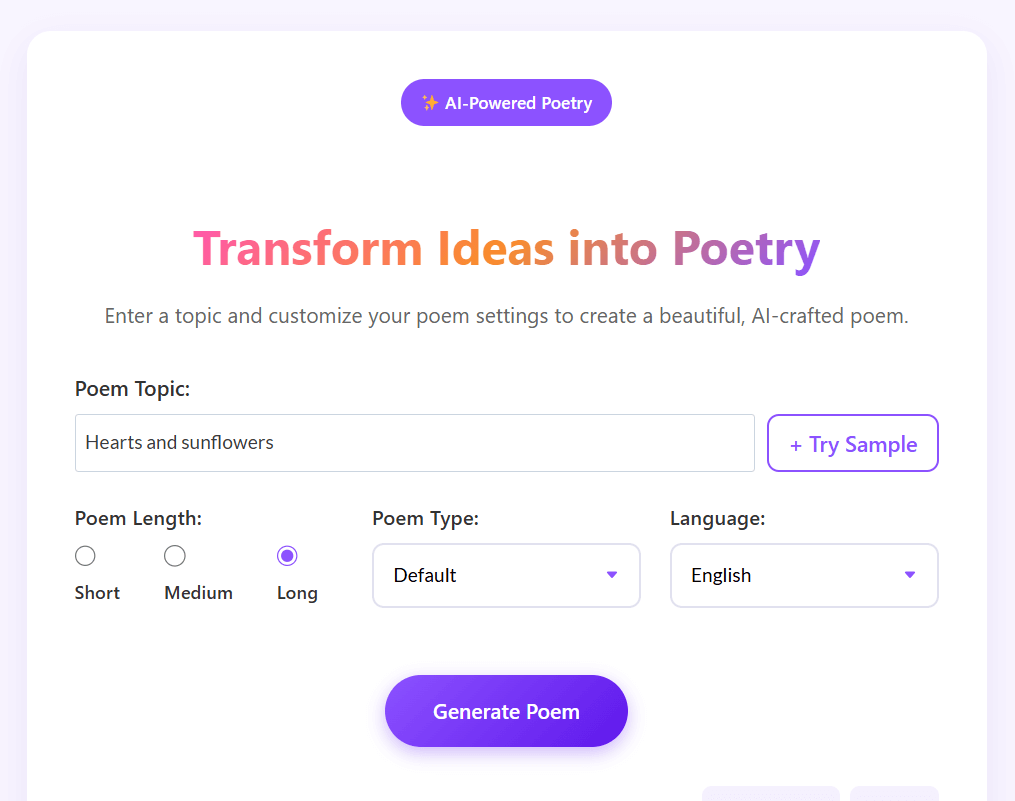
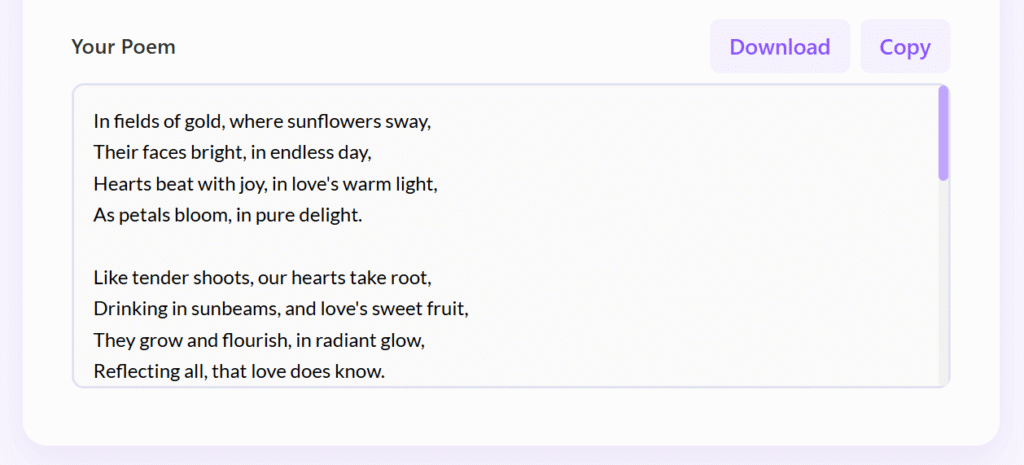
Final Thoughts
Poetry isn’t a single voice, it’s a chorus of styles, sounds, and structures. Whether you’re reading or writing, knowing the types of poems opens up more ways to express and connect.
Start small. Try a haiku. Move to a sonnet. Let a limerick make you laugh. Or let a villanelle bring you to tears.
And if you’re ever stuck, don’t hesitate to use an AI poem generator as your assistant. Sometimes all it takes is a prompt and the rest follows naturally.
What are the core elements of poetic structure?
Every poem stands on a few key pillars. First, rhyme scheme the pattern of line endings (ABAB, AABB, or none at all). Next comes meter, the beat behind each line (think of it as a poem’s heartbeat). Stanza structure how lines group into blocks shapes pacing and flow. Finally, line breaks and imagery guide emotion and rhythm, much like a painter chooses where to drop color.
Which poem forms work best for beginners?
Start simple. Acrostic poems let you spell a word down the page no rhyme needed. Haiku teaches you to capture a moment in just three lines (5‑7‑5 syllables). Limericks add play with AABBA rhyme and a bouncy rhythm. If you want full freedom, try free verse it has no rules, only your voice.
How do I choose the right rhyme scheme?
Match your mood to your pattern. A tight ABAB or AABB scheme brings order—perfect for playful limericks or firm couplets. Loose or no rhyme (free verse) suits heartfelt themes or modern takes. Think of rhyme like a dance: a steady waltz needs a strict step, while a freestyle beat lets you move any way you like.
What are the three main types of poems?
Narrative, lyrical, and dramatic.

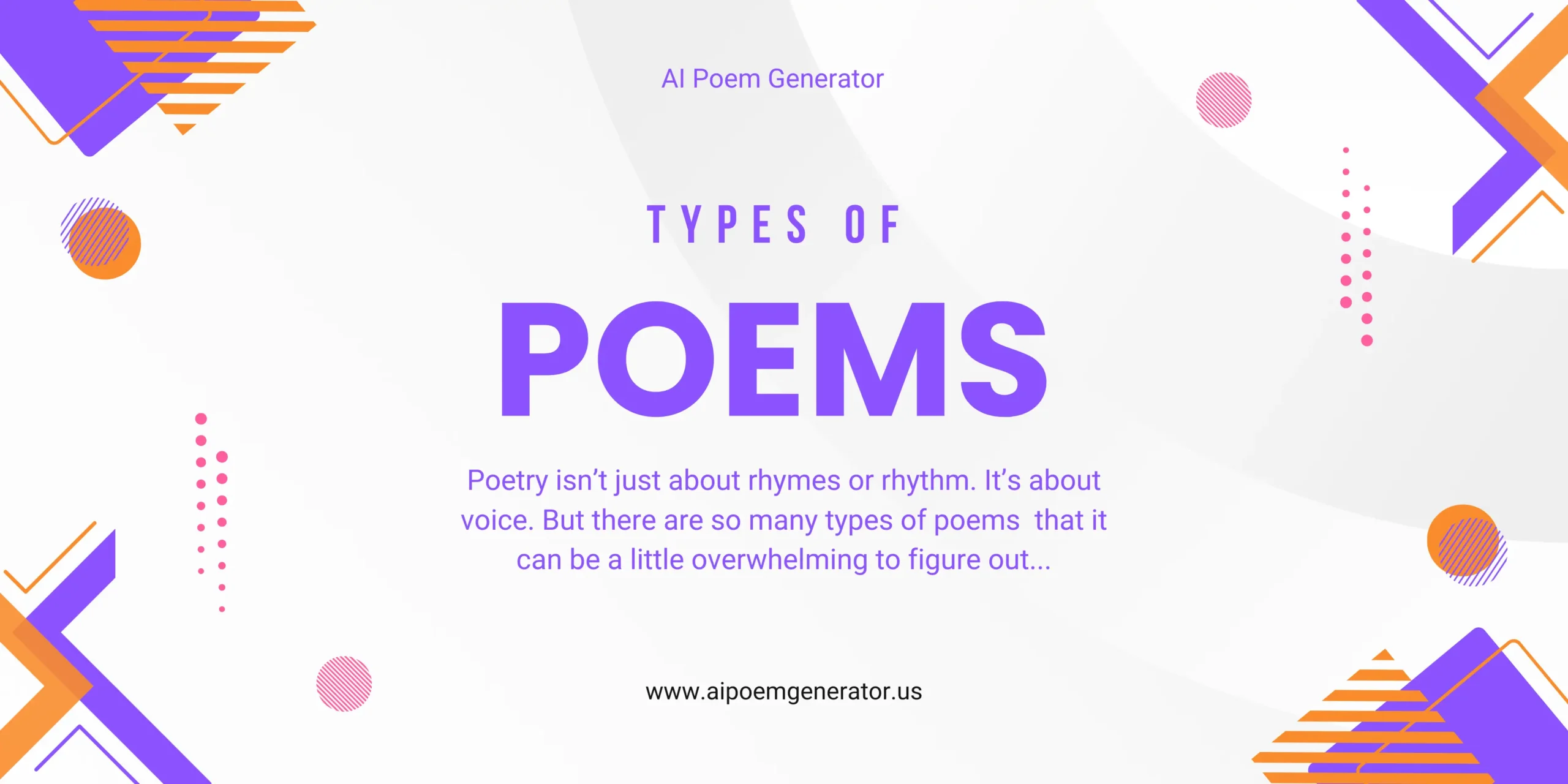
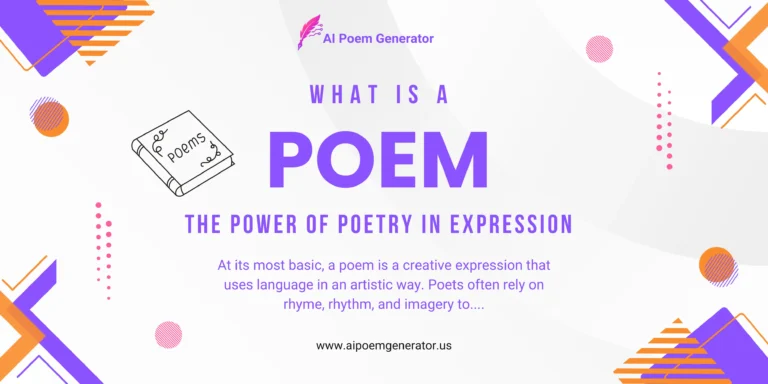
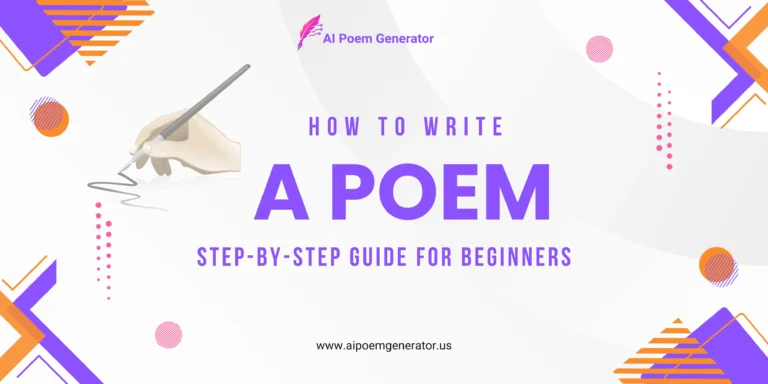
2 Comments